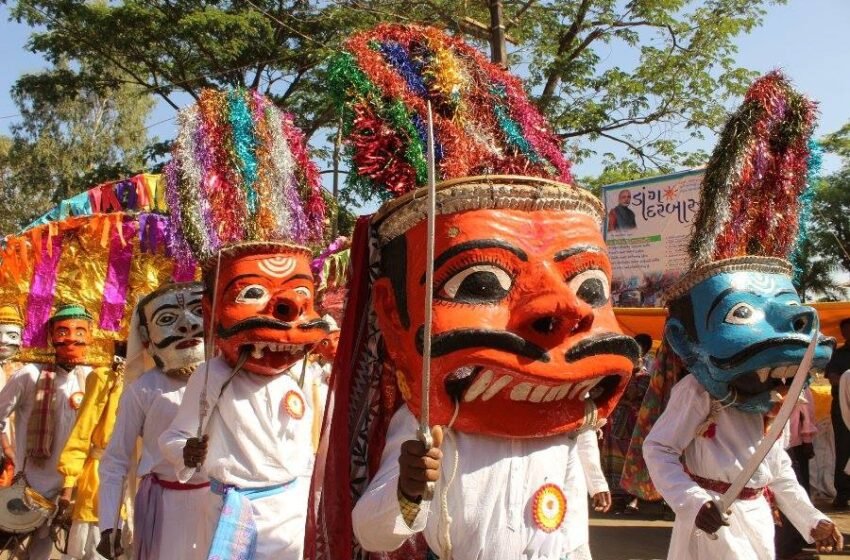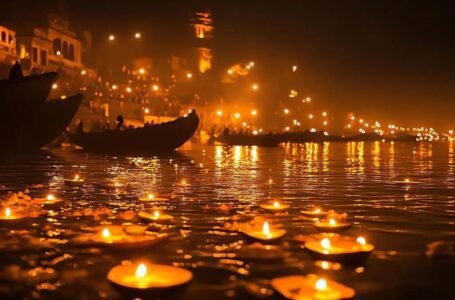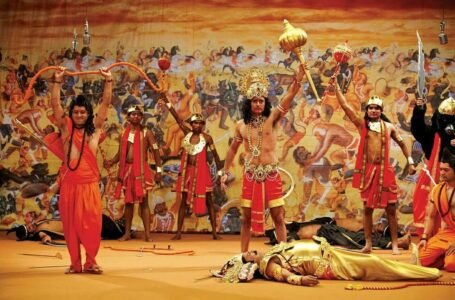Dang Lila: A Cultural Jewel of Gujarat’s Tribal Heritage

The Dang Lila dance is an exquisite representation of the Dang district’s vibrant cultural fabric, situated in the lush and historic Dandakaranya region of Gujarat. Rooted in mythology, folklore, and tribal traditions, Dang Lila is a captivating tribal dance that celebrates the unity, spirituality, and rich heritage of the Dang tribe. Despite its cultural significance, this art form is fading as modernization and urban migration gradually disrupt tribal life. This article delves into the origins, traditions, and contemporary challenges of Dang Lila, weaving the tale of a dance that stands as a testament to the cultural resilience of its people.
Origins and Mythological Significance
The roots of Dang Lila lie in the ancient myths of the Ramayana. Dandakaranya, believed to be the forest where Lord Rama, Sita, and Lakshmana spent part of their exile, forms the backdrop of the Dang district. This mythical connection imbues the dance with spiritual and historical significance, as the region’s tribal communities have preserved these tales through oral traditions and performances like Dang Lila.
The dance serves as a form of storytelling, depicting episodes from mythology, everyday tribal life, and natural elements like forests, rivers, and wildlife. Over centuries, Dang Lila has evolved into an elaborate cultural expression that not only entertains but also educates younger generations about their heritage.
Cultural Roots and Celebratory Spirit
Dang Lila is performed during major tribal festivals, particularly Holi, the festival of colors. It also features prominently in the Dang Darbar, a three-day annual cultural festival celebrated in Ahwa, the district headquarters. This event, rooted in the colonial tradition of holding assemblies or “darbars,” has become a vibrant platform for showcasing the art, music, and dance forms of the Dang tribe.
The dance is a communal activity, reflecting the tribal spirit of togetherness. It is performed in large groups, with men and women participating in intricate formations. The performers, adorned in traditional attire, move in sync to the rhythm of folk instruments like the dhol, nagada, and flute, creating a mesmerizing spectacle.
Performance Elements: Movements and Techniques
Dang Lila is characterized by its energetic and dynamic movements, reflecting the vitality and resilience of the tribal community. The dancers form circles or spirals, symbolizing unity and harmony with nature. They often mimic the natural world, with movements resembling the flowing rivers, rustling leaves, or bounding wildlife of the Dangs’ dense forests.
The dance begins with slow, deliberate steps, gradually building in intensity. The performers use props like bamboo sticks, shields, or swords, adding a martial element reminiscent of the tribe’s history as hunters and warriors. The intricate footwork and rhythmic clapping or stick-beating synchronize with the percussive beats, creating a hypnotic rhythm that captivates audiences.
Costumes and Adornments
The vibrant costumes of Dang Lila performers are a visual feast. Men typically wear dhotis and turbans, while women adorn colorful sarees with intricate tribal patterns. Both genders accessorize with handmade jewelry crafted from locally sourced materials like beads, feathers, and shells. The use of natural dyes and sustainable materials reflects the tribe’s deep connection to their environment.
The costumes and accessories not only enhance the aesthetic appeal of the dance but also carry symbolic meanings. The bright colors signify joy and celebration, while the jewelry and props highlight the tribe’s craftsmanship and resourcefulness.
The Musical Ensemble
The music accompanying Dang Lila is as captivating as the dance itself. Traditional instruments like the dhol, nagada, and flute form the backbone of the musical ensemble. The rhythmic beats and melodic tunes create a lively atmosphere, encouraging participation from both performers and spectators.
The songs, sung In the local Konkani dialect, often narrate mythological stories, praise nature, or express communal sentiments. The interplay between the music and dance fosters a sense of unity and cultural pride among the participants.
Socio-Cultural Context
The Dang district, home to over 94% tribal population, is one of the most underdeveloped regions in Gujarat. With 73.84% of its population living below the poverty line, the district faces significant socio-economic challenges. Despite these hardships, the Dang tribe has preserved its cultural traditions, with Dang Lila being a shining example of their resilience.
The dance serves as a medium of cultural preservation and social cohesion. It provides a platform for the community to celebrate their heritage, pass on ancestral knowledge, and strengthen bonds. Moreover, it offers an opportunity for the younger generation to reconnect with their roots and take pride in their identity.
Challenges and Decline
In recent years, Dang Lila has faced several challenges threatening its survival. The migration of tribal youth to urban areas in search of employment has disrupted the traditional lifestyle, leading to a decline in cultural practices. Modern influences and the lack of institutional support have further exacerbated the situation.
The dwindling interest among younger generations, coupled with the absence of formal documentation or promotion, has left Dang Lila at the brink of extinction. Efforts to revive and sustain this art form require immediate attention from cultural organizations, government agencies, and local communities.
Efforts for Revival and Preservation
Despite the challenges, several initiatives have been undertaken to preserve Dang Lila and other tribal art forms of the Dangs. The Dang Darbar festival serves as a crucial platform for showcasing these traditions to a wider audience. Cultural organizations and NGOs are working to document and promote tribal dances through workshops, exhibitions, and performances at national and international forums.
Educational programs aimed at raising awareness about the significance of tribal heritage among younger generations can also play a pivotal role. Encouraging local schools to include cultural activities in their curriculum and providing financial support to tribal artists are essential steps toward preserving this invaluable heritage.
Global Recognition and Influence
Dang Lila, though deeply rooted in local traditions, has the potential to resonate with global audiences. Its themes of harmony with nature, community spirit, and resilience are universally relatable. Efforts to promote Dang Lila on international platforms, such as cultural festivals and tourism events, can help bring this unique dance form to the global stage while providing economic opportunities for tribal communities.
The popularity of Warli painting, another art form from the Dang district, serves as a testament to the global appeal of tribal traditions. Similar initiatives for Dang Lila could ensure its survival and growth in the modern era.
Conclusion: Preserving the Legacy of Dang Lila
Dang Lila is more than just a dance; it is a living testament to the Dang tribe’s rich cultural heritage and indomitable spirit. It encapsulates the essence of their history, mythology, and way of life, offering a glimpse into a world where nature and humanity coexist in harmony.
As modernization and urbanization continue to transform tribal communities, preserving Dang Lila becomes a collective responsibility. By recognizing its cultural significance, supporting tribal artists, and promoting this art form on national and international platforms, we can ensure that Dang Lila remains a vibrant and enduring part of India’s cultural mosaic.
The story of Dang Lila Is not just the story of a dance; it is the story of a people striving to keep their heritage alive in the face of adversity. Let us celebrate and support this beautiful tradition, allowing it to inspire generations to come.


